
St. Mark's Clock Tower (San Marco Clock Tower) or Torre dell'orologio is a Renaissance building in Venice, which is one of the most famous sights of the city.
The clock tower is famous for its clocks, sculptural decorations and a bell on the roof.
Guided tours are conducted around the tower, during which you can go to the roof and admire the views of the very heart of Venice.
The tower is located on the main square of Venice - St. Mark's Square (St. Mark's Square, Piazza San Marco).
From the great arch of the tower begins one of the most famous shopping streets of Venice - Merceria dell'Orologio.

The tower was built between June 1496 and 1499, after the Senate of His Serene Highness decided to build a new public clock to replace the outdated San Alipio clock, which was located in a niche on the north-western top of the facade of St. Mark's Cathedral, which is located nearby, since these clocks were quite simple, since they did not have a dial, and the clock did not show, but signaled the time by the acoustic ringing of the bell. The new tower clock had to be equipped with automation and complex mechanisms to reflect the interest of the Venetian state in mechanical sciences and to show a society that keeps up with the times. The manufacture of watches was entrusted to two well-known watchmakers of that time, Reggio Emilia: Giampaolo and Giancarlo Raineri (father and son), who in 1481 had already made a similar clock for the municipal tower of Reggio.
In 1506 and 1757, the tower was expanded until it acquired its present features. The clock mechanism was also subsequently modified.
The lower two floors of the tower create a monumental arch leading to the main street of the city, the Merceria, which connects the political and religious center (St. Mark's Square) with the commercial and financial center (Rialto district) Venice.
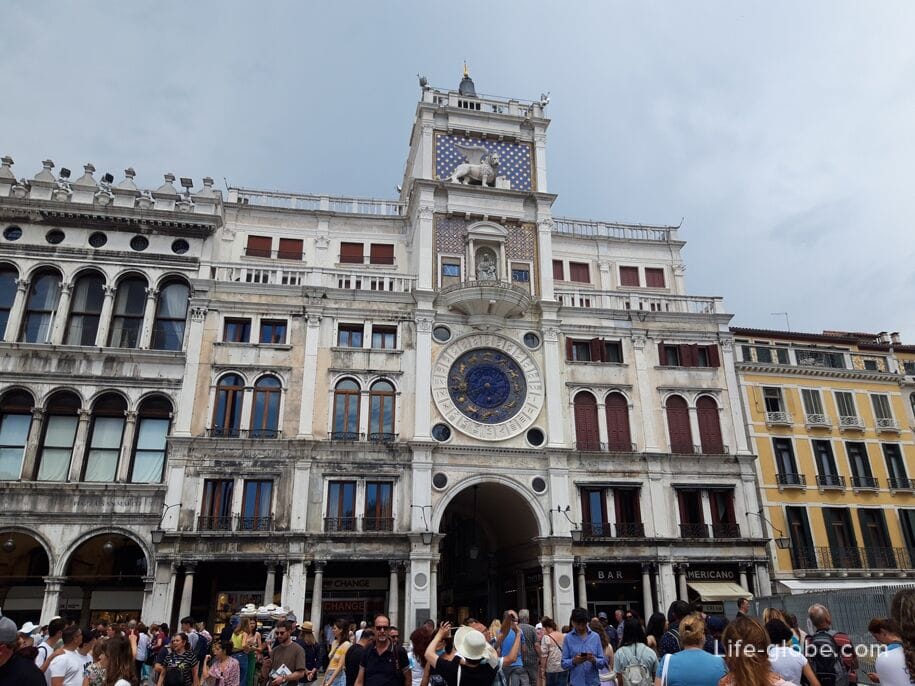
Above the arch, in the center of the tower, there is a large clock face (diameter 4.5 meters) with a blue-gold finish inside a marble circle with Roman numerals engraved on it - 24 hours (from I to XXIV). The golden arrow with the image of the sun moves in a circle and shows the time.
Inside the dial are zodiac signs (dating back to the 1490s) that rotate a little slower than the arrow to show the position of the Sun in the zodiac. In the very center of the dial is the Earth, a little further from it is the Moon, which rotates to show its phases, surrounded by stars that do not move.
The four round holes on the sides of the dial are no longer used.
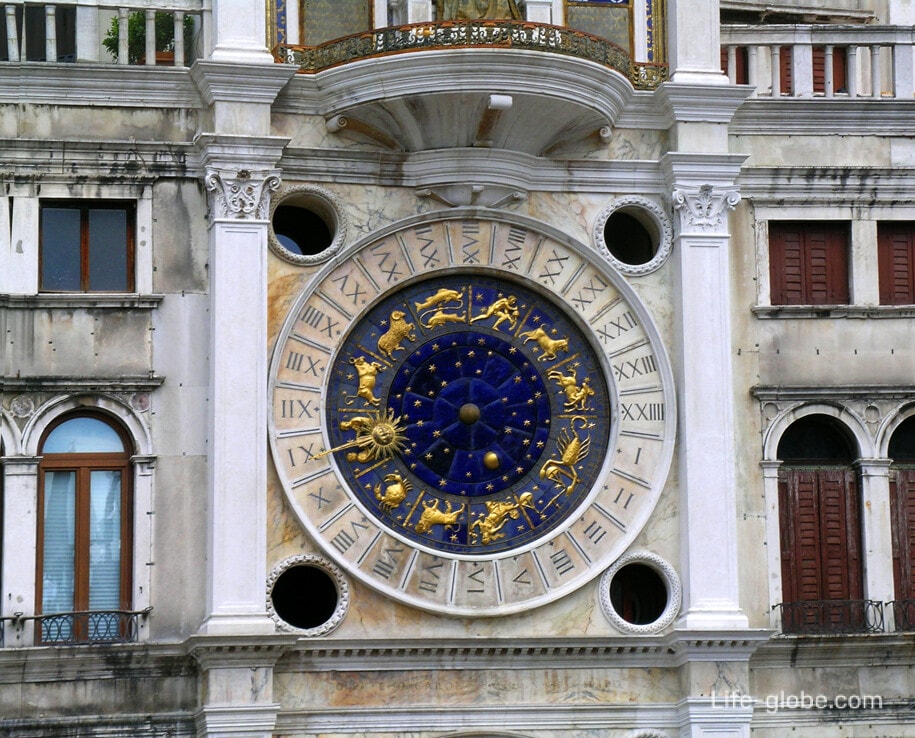
Above the clock there is a semicircular projecting gallery, in the niche of which, decorated with columns, there is a sculpture of the Virgin and Child made of forged copper.
On each side of the sculpture there are blue panels showing the time: on the left - Roman numerals show the hours, and on the right Arabic - minutes (with an interval of 5 minutes).
Twice a year, on Epiphany (January 6) and Ascension (Thursday on the 40th day after Easter), this part of the tower shows a performance. So, from one of the doors with numbers, three magi appear, led by an angel with a trumpet, then they pass through the gallery, worshiping the Mother of God and the Baby, and then disappear into another door.
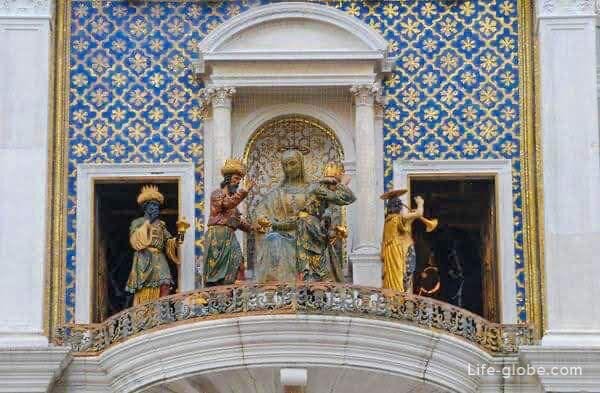
Above the gallery there is a sculpture of a winged lion with an open book, a symbol of the Lightest, on a blue background with golden stars.

The tower ends with a terrace surrounded by a balustrade of Istrian stone, shaped by columns.
On the terrace itself, on a stone base the width of a tower, there is a bell and two large bronze statues that ring the bell.
One of the statues depicts an old man, the other a young man, which symbolizes the passage of time for people. The bell is original and signed by Simeone, who cast it in the Arsenal in 1497. These sculptures are called "Moors", and the terrace on which they are located is called the "Moors' terrace".
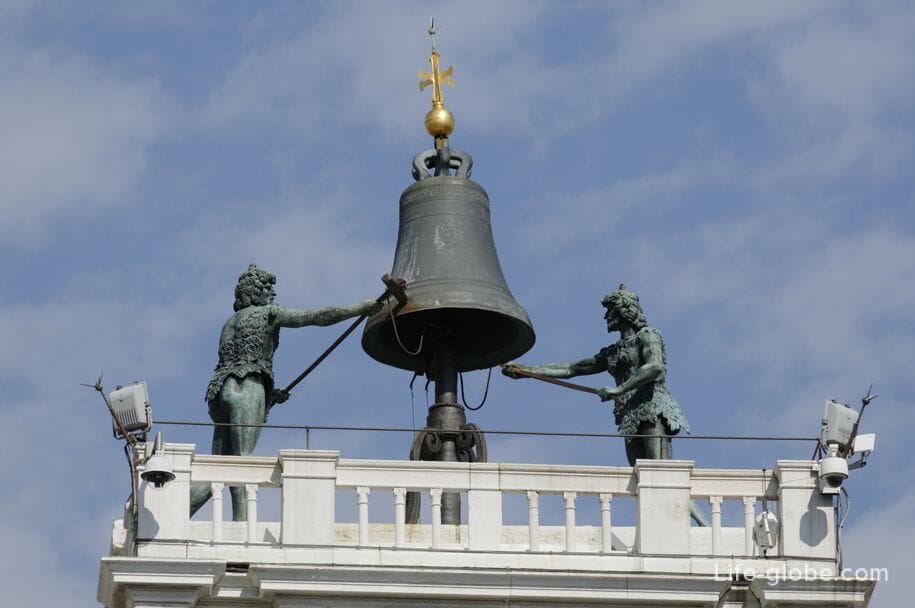
All this clockwork and sculptural part of the Venetian Clock Tower create an unsurpassed harmony and are masterpieces of the sights of Venice.
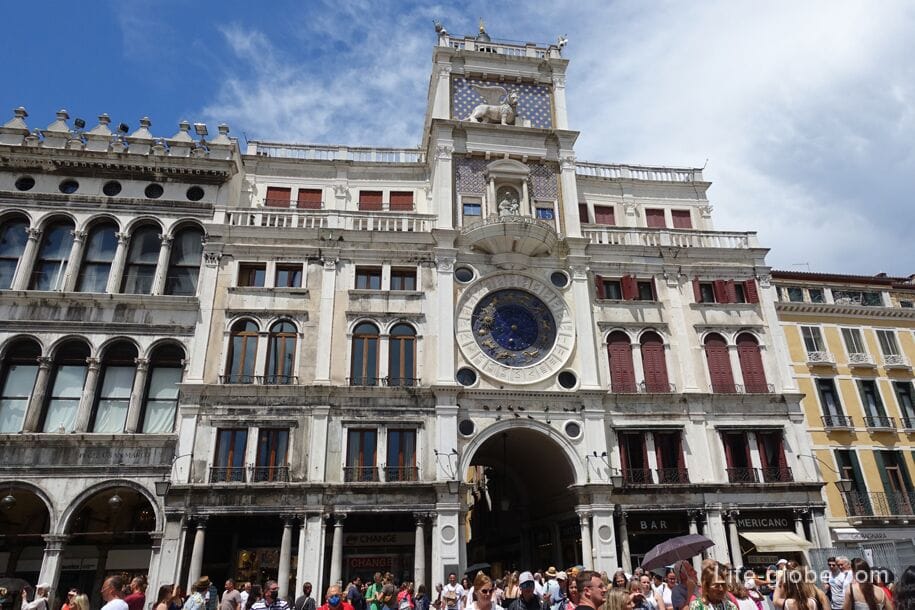
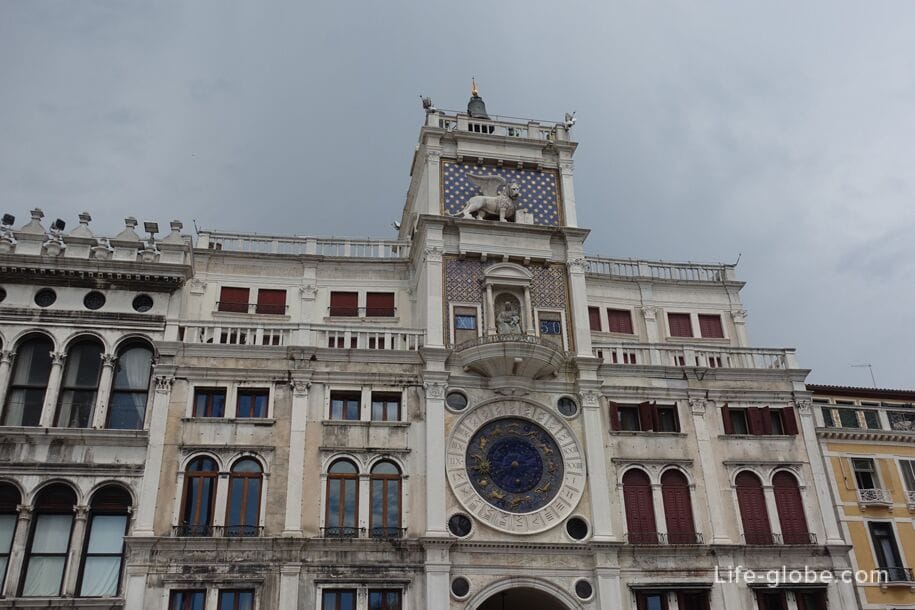
The clock tower can be visited, while walking through the five floors of the tower.
After the first stone staircase, guests enter a small room in which the history of the Tower is illustrated. From here you can already see an interesting play of pulleys, weights and counterweights of the clock, which silently lower and rise at regular intervals.
Passing a metal spiral staircase, visitors come to a clockwork complex, which can be viewed up close and whose main functions are illustrated.

The next staircase leads to the upper floor, where there are wooden statues of the Magi and an angel, as well as two doors from which on the day of the Epiphany and Ascension the statues go out to the procession.
Here you can also see from the inside the mechanism of the vestibule with a digital indication of hours and minutes.
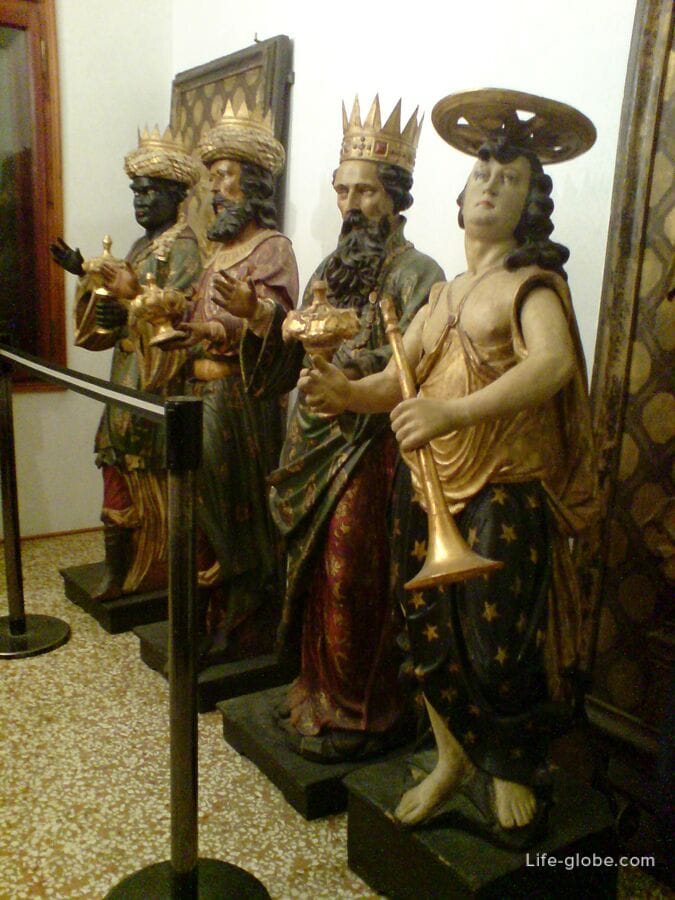

After the next ascent, there is a room in which ancient relics of a fifteenth-century car have been preserved, from here there is access to two side terraces and, by another steep spiral staircase, to the Moors terrace, where huge statues and a bell can be viewed up close, as well as admire the panoramic view of Venice and its lagoon.
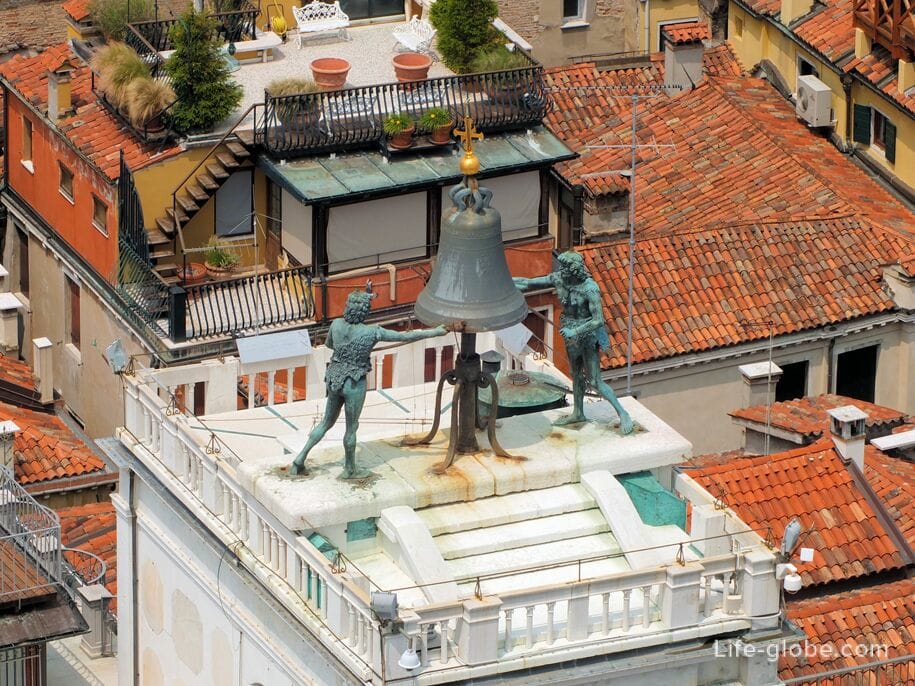
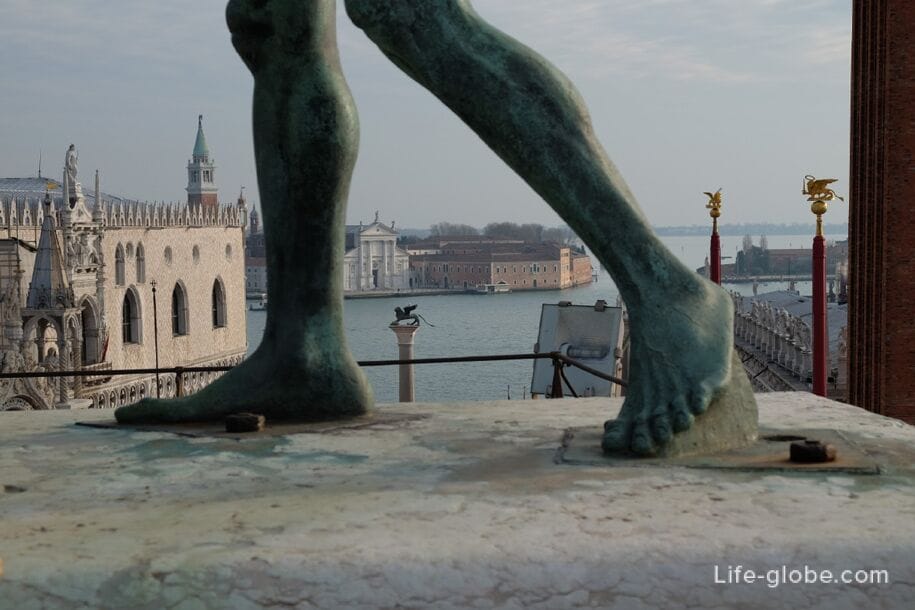
A visit to the tower is paid with a guide and by appointment.
Excursions are conducted in Italian, English and French.
You can sign up for excursions, find out the exact cost and other conditions on the official website of the Clock Tower Museum: torreorologio.visitmuve.it.
The address of the Clock Tower: P.za San Marco, 30124 Venezia VE, Italy.
Coordinates of the Clock Tower: 45°26'05.0"N 12°20'20.0"E (45.434722, 12.338889).
All accommodation facilities in Venice, including in the historic city center, can be viewed and booked here